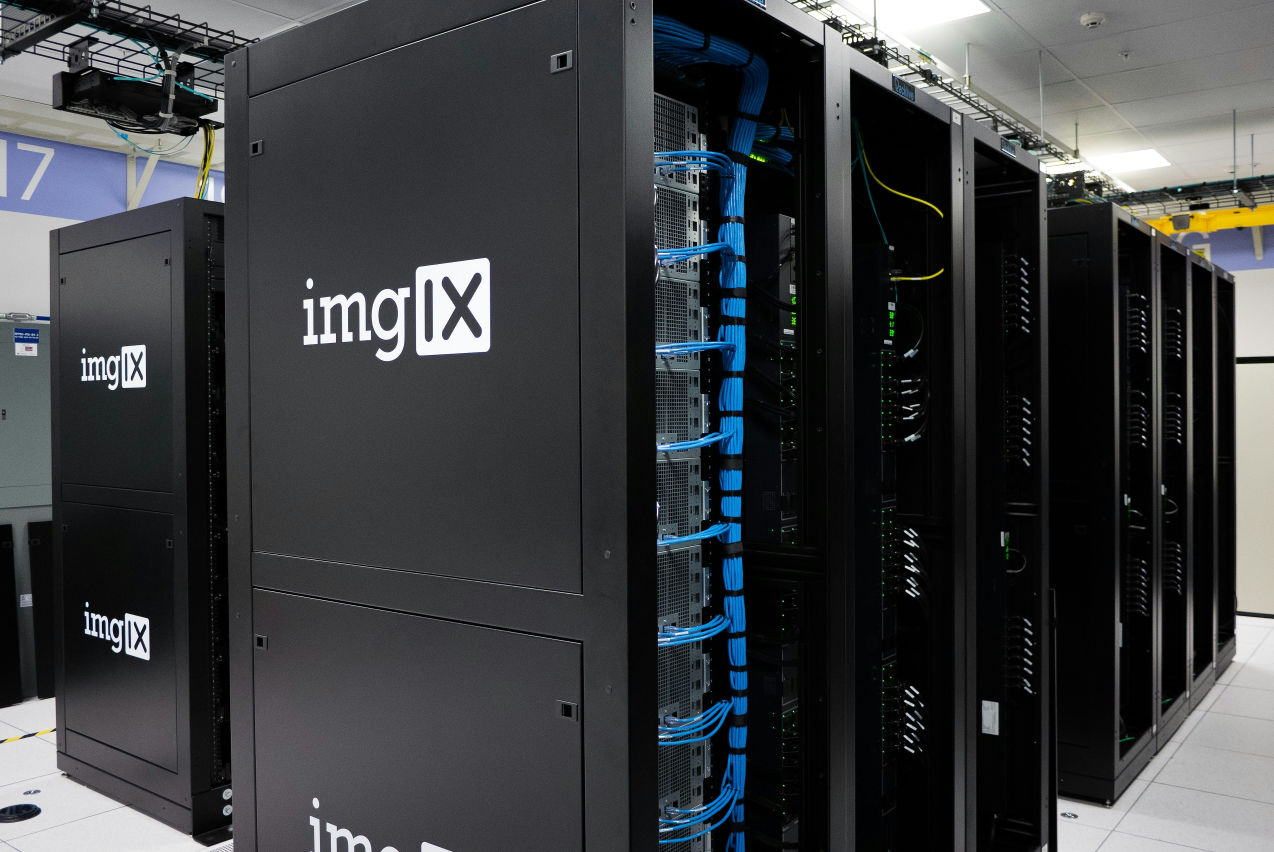A Guide to Cloud Network Technology: Benefits and Types

What is Cloud Network Technology?
Cloud network technology represents a pivotal advancement in modern computing, redefining how data, applications, and services are managed and delivered over the internet. This technology is integral to cloud computing, facilitating efficient resource utilization, scalability, and connectivity across various platforms and devices.
Definition of Cloud Network Technology
Cloud network refers to the framework that enables the delivery of computing services, including servers, storage, databases, networking, software, and analytics, over the internet, commonly known as the cloud. This technology leverages virtualization, allowing multiple virtual networks to run on a single physical network infrastructure. Essentially, cloud network technology abstracts the complexities of the underlying hardware, providing users with flexible, on-demand access to resources without the need for extensive on-premises infrastructure.
The core components of cloud network technology include cloud networking services, cloud-based routers, virtual private networks (VPNs), and software-defined networking (SDN). These components work together to ensure seamless connectivity, enhanced security, and efficient data flow between cloud-based resources and end-users. By decoupling the physical hardware from the network services, cloud network technology enables organizations to achieve greater agility, reduce operational costs, and scale their operations dynamically to meet evolving business needs.
Evolution and Growth of Cloud Networking
Traditional networking relied heavily on physical hardware, such as routers, switches, and dedicated lines, which were often expensive and challenging to scale. The evolution of cloud networking has been marked by significant technological advancements and shifts in IT infrastructure paradigms. The introduction of virtualization in the early 2000s marked the beginning of a transformative era in networking, allowing multiple virtual instances to run on a single physical machine, optimizing resource utilization, and reducing costs.
The demand for more flexible and scalable networking solutions grew as cloud computing gained momentum. This led to the development of cloud-native networking technologies designed to support cloud environments' unique requirements. Key milestones in the evolution of cloud networking include the advent of software-defined networking (SDN) and network functions virtualization (NFV). SDN decouples the network control plane from the data plane, enabling centralized management and programmability of network resources. NFV, on the other hand, replaces traditional network appliances with software-based solutions, enhancing flexibility and reducing hardware dependency.
Importance and Benefits of Cloud Network Technology
Cloud networks have become a cornerstone of modern IT infrastructure, offering numerous advantages that are crucial for businesses in today's digital landscape. Its significance lies in its ability to provide scalable, flexible, and cost-effective networking solutions, which are essential for supporting dynamic business operations and digital transformation initiatives.
- Scalability and Flexibility: One of the most significant benefits of cloud network technology is its inherent scalability and flexibility. Unlike traditional networking, which often requires significant investment in physical infrastructure to scale, cloud networking allows organizations to easily expand or contract their network resources based on demand. This elasticity is particularly valuable for businesses experiencing fluctuating workloads or seasonal spikes in traffic, as it enables them to optimize resource usage and avoid over-provisioning.
- Cost Efficiency: Cloud network technology reduces the need for substantial capital expenditures on hardware and maintenance. By leveraging a pay-as-you-go model, businesses can lower operational costs and invest more in innovation and strategic initiatives. The reduced need for physical infrastructure also translates to lower energy consumption and maintenance expenses, further enhancing cost savings.
- Enhanced Security: Modern cloud network technology incorporates advanced security measures, such as encryption, identity and access management (IAM), and zero-trust security models, to protect data and applications. Cloud providers often employ robust security monitoring and compliance standards, safeguarding sensitive information against unauthorized access and cyber threats. This level of security is particularly critical for businesses handling sensitive customer data or operating in regulated industries.
- Improved Collaboration and Accessibility: Cloud network technology facilitates seamless collaboration and remote work by enabling users to access applications and data from anywhere with an internet connection. This accessibility is essential for supporting distributed teams and enhancing productivity, as employees can collaborate in real-time and access the resources they need without geographic constraints.
- Disaster Recovery and Business Continuity: Cloud network technology enhances disaster recovery and business continuity capabilities by providing redundant infrastructure and automated backup solutions. In a hardware failure or natural disaster, businesses can quickly restore their operations and minimize downtime, ensuring continuity of service and protecting critical data.
Understanding Cloud Storage and Computing Resources
These two are fundamental components of cloud network technology, playing a critical role in how organizations store, manage, and process data. These resources provide the backbone for many cloud services, enabling businesses to leverage scalable and efficient solutions for their IT needs.
Defining Cloud Storage
Cloud storage is a service model in which data is stored on remote servers accessed via the internet, rather than on local servers or personal computers. These remote servers, typically managed by third-party cloud providers, offer scalable and elastic storage solutions that can be easily adjusted based on user requirements. Cloud storage is designed to provide high availability, durability, and security, ensuring that data is accessible whenever needed and protected against loss or unauthorized access.
Key features of cloud storage include:
- Elasticity and Scalability: Cloud storage solutions can automatically scale up or down based on demand, allowing businesses to handle varying data loads without investing in additional hardware.
- Data Redundancy and Backup: Most cloud storage services offer built-in redundancy and automated backup options, protecting data from hardware failures and other potential disruptions.
- Accessibility and Collaboration: Users can access cloud-stored data from any device with an internet connection, facilitating collaboration and remote work.
Common types of cloud storage include:
- Object Storage: Designed to handle large amounts of unstructured data, such as multimedia files and backups. Examples include Amazon S3 and Google Cloud Storage.
- Block Storage: Suitable for applications requiring low-latency and high-performance storage, such as databases and virtual machines. Examples include Amazon EBS and Azure Disk Storage.
- File Storage: Provides a hierarchical file system, making it ideal for shared file storage and collaborative work environments. Examples include Amazon EFS and Google Filestore.
Definition of Cloud Computing Resources
The resources in cloud computing have various computational and processing capabilities provided by cloud service providers. These resources enable businesses to run applications, process data, and perform complex computations without the need for extensive on-premises infrastructure.
Key features of cloud computing resources include:
- On-Demand Availability: Computing resources are available on-demand, allowing users to provision and scale resources as needed without long-term commitments.
- Pay-As-You-Go Pricing: Users pay only for the resources they consume, making cloud computing a cost-effective solution for managing variable workloads.
- Flexibility and Customization: Cloud computing services offer a wide range of configurations and options, enabling businesses to tailor resources to their specific needs.
Common types of cloud computing resources include:
- Compute Instances: Virtual machines that provide the processing power and memory needed to run applications. Examples include Amazon EC2 and Google Compute Engine.
- Serverless Computing: A model where the cloud provider automatically manages the infrastructure, allowing developers to focus on code without worrying about server management. Examples include AWS Lambda and Azure Functions.
- Containers and Kubernetes: Lightweight, portable units of software that bundle an application and its dependencies, facilitating consistent deployment across different environments. Kubernetes is an orchestration platform for managing containerized applications at scale. Examples include Google Kubernetes Engine and Azure Kubernetes Service.
- Machine Learning and AI Services: Cloud-based platforms and tools that provide pre-built models and frameworks for developing and deploying AI applications. Examples include AWS SageMaker and Google AI Platform.

Benefits of Cloud Storage and Computing Resources
These resources offer numerous benefits that enhance business operations and IT capabilities:
- Cost Savings: Cloud resources provide substantial cost savings by eliminating the need for significant upfront investments in hardware and reducing ongoing maintenance costs.
- Scalability and Flexibility: Businesses can easily scale resources up or down based on demand, ensuring optimal performance and cost-efficiency.
- Enhanced Security and Compliance: Leading cloud providers implement robust security measures and comply with industry standards, helping businesses safeguard sensitive data and meet regulatory requirements.
- Increased Agility and Innovation: The ability to quickly deploy and scale applications enables businesses to innovate faster and respond to market changes more effectively.
- Improved Collaboration and Accessibility: Cloud resources facilitate seamless access to data and applications, supporting remote work and enhancing collaboration across distributed teams.
Types of Cloud Networking
Cloud networking comprises various models catering to different business needs and IT environments. Understanding the distinct types of cloud networking—public, private, and hybrid—can help organizations select the most suitable infrastructure for their operations.
Public Cloud Networking
In this model, third-party providers provide services over the public internet, making them accessible to anyone who wants to purchase or use them. These services are typically delivered through shared infrastructure and are highly scalable and cost-effective. Major providers like Amazon Web Services (AWS), Microsoft Azure, and Google Cloud Platform (GCP) dominate the public cloud market.
Public cloud networking offers several advantages. Firstly, it provides significant cost savings since there is no need for capital investment in hardware or maintenance. Businesses only pay for their resources, making it a flexible option for managing variable workloads. Secondly, public cloud services offer extensive scalability, allowing businesses to adjust their resources in response to changing demands quickly. This is particularly beneficial for startups and growing companies that need to scale operations rapidly without physical infrastructure constraints.
Additionally, public cloud networking facilitates easy access to a wide range of advanced technologies and services, such as machine learning, big data analytics, and IoT platforms, which can drive innovation and enhance business processes. Security and compliance are also critical aspects of public cloud networking, with leading providers implementing robust security measures and adhering to industry standards to protect data and applications from cyber threats.
Private Cloud Networking
This model refers to cloud infrastructure that is dedicated to a single organization, offering enhanced control, security, and customization. This model can be hosted on-premises or by a third-party provider, but unlike public clouds, the infrastructure is not shared with other organizations.
One of the primary benefits of private cloud networking is the high level of security and privacy it provides, making it ideal for businesses with stringent regulatory requirements or those handling sensitive data. Organizations have complete control over their infrastructure, allowing them to customize security settings, compliance protocols, and resource management according to their specific needs.
Hybrid Cloud Networking
Hybrid cloud is a combination of both public and private clouds, offering a versatile solution that leverages the benefits of both environments. This model allows organizations to maintain control over their sensitive data and critical applications in a private cloud while utilizing the scalability and cost-efficiency of the public cloud for less sensitive workloads and peak demand scenarios.
The primary advantage of hybrid cloud networking is its flexibility and balance. It enables businesses to optimize their IT infrastructure by distributing workloads across public and private clouds based on specific requirements, such as security, performance, and cost. For instance, sensitive customer data can be stored in a private cloud to ensure compliance with data protection regulations, while high-volume, less-sensitive applications can run in the public cloud to take advantage of its scalability.
Hybrid cloud networking also enhances disaster recovery and business continuity strategies by providing multiple deployment environments. In the event of a failure in one environment, businesses can quickly shift workloads to another, minimizing downtime and maintaining service availability.
Multi-Cloud Networking
Unlike hybrid cloud, which combines private and public clouds, multi-cloud utilizes several public cloud services from different providers. Multi-cloud networking refers to the strategy of using services from multiple cloud providers to optimize performance, reduce costs, and enhance resilience. This approach allows businesses to avoid vendor lock-in, providing greater flexibility and choice in service selection.
The primary advantage of multi-cloud networking is the ability to leverage the strengths of different cloud providers. For example, a business might use one provider for its robust data analytics tools and another for its superior machine learning capabilities. This selective use of cloud services can optimize workload performance and cost efficiency. Furthermore, multi-cloud strategies enhance redundancy and disaster recovery capabilities. By distributing workloads across multiple providers, organizations can mitigate the risk of downtime or data loss associated with a single provider's outage or failure. This approach also allows for more strategic resource allocation, as businesses can choose the best cloud service for each specific task, ensuring optimal performance and cost-effectiveness.
Multi-cloud networking also supports regulatory compliance and data sovereignty requirements. Organizations can store and process data in specific geographic locations to comply with local regulations, thereby enhancing data governance and compliance efforts. Additionally, this model provides greater bargaining power and negotiation leverage with cloud providers, as businesses are not reliant on a single vendor for all their cloud needs.
Virtual Private Cloud (VPC)
VPC is a secure, isolated segment within a public cloud environment, providing the benefits of both private and public clouds. VPCs offer enhanced security and control by creating a virtualized network environment where users can define their own network architecture, including subnets, route tables, and access controls.
One of the key benefits of VPCs is their ability to provide a high level of security and compliance. By isolating network resources within a dedicated virtual network, businesses can implement stringent security measures, such as firewalls, VPNs, and network access controls, to protect sensitive data and applications. This isolation also helps ensure compliance with regulatory requirements, as businesses can control data flow and access within their VPC.
VPCs also offer significant flexibility and scalability. Organizations can easily adjust their VPC configurations to accommodate changing business needs, such as scaling resources up or down based on demand. This scalability is particularly beneficial for businesses with dynamic workloads or those experiencing growth, as it allows them to manage their infrastructure without significant upfront investments efficiently.
Community Cloud Networking
In this model cloud infrastructure is shared among several organizations with similar requirements and interests, often from the same industry or with common regulatory or compliance needs. This model combines the benefits of private and public clouds, providing a collaborative environment that offers cost savings, shared expertise, and enhanced compliance.
The primary advantage of community cloud networking is its ability to address specific industry needs and regulatory requirements. By pooling resources and expertise, organizations within a community cloud can develop tailored solutions that meet their unique operational and compliance challenges. This collaborative approach also enables cost-sharing, reducing the financial burden on individual organizations while providing access to advanced cloud technologies and services.
Community clouds also promote standardization and interoperability among member organizations. Businesses can establish common standards and practices by working together within a shared cloud environment, facilitating smoother data exchange and collaboration. This standardization can enhance operational efficiency and streamline processes across the community.
Cloud Networking and Consent Manager
The integration of cloud networking with consent management systems has become increasingly important. As businesses collect and process vast amounts of personal data, ensuring compliance with data protection regulations and maintaining user trust are critical. Cloud networking provides the infrastructure needed to support sophisticated consent management systems, enabling organizations to handle consent data securely and efficiently.
Consent management refers to the processes and systems that businesses use to obtain, track, and manage user consent for data processing activities. This is essential for complying with regulations like the General Data Protection Regulation (GDPR) in the European Union and the California Consumer Privacy Act (CCPA) in the United States, which mandate that organizations must obtain explicit consent from users before collecting or processing their personal data.
Role of Cloud Networking in Consent Management
Cloud networking plays an important role in enhancing the capabilities of consent management systems by providing a scalable, flexible, and secure infrastructure. With cloud networking, organizations can deploy consent management solutions that are capable of handling large volumes of consent data and can easily scale to accommodate growing user bases and increasing regulatory requirements.
One of the primary benefits of integrating cloud networking with consent management is enhanced scalability. Cloud infrastructure allows businesses to scale their consent management systems up or down based on demand, ensuring that they can handle spikes in user activity or changes in regulatory requirements without significant delays or additional infrastructure costs. This elasticity is particularly valuable for global businesses that need to manage consent across multiple regions and jurisdictions.
Components of Cloud Network Technology
Cloud networking technology comprises several critical components that work together to provide robust, scalable, and efficient networking solutions for businesses. Understanding these components is essential for leveraging the full potential of cloud services and optimizing IT infrastructure.
Overview of the Components
The core components of cloud network technology include cloud infrastructure, virtualization technologies, networking services, and security frameworks. These elements form the foundation of cloud networking, enabling seamless connectivity, efficient resource management, and enhanced security.
Cloud Infrastructure: This refers to the physical and virtual resources that support cloud computing services. It includes data centers, servers, storage systems, and networking equipment. Cloud infrastructure is designed to be highly scalable, allowing resources to be dynamically allocated based on demand.
Virtualization Technologies: Virtualization is a key enabler of cloud network technology, allowing multiple virtual instances to run on a single physical server. This technology abstracts the underlying hardware, creating virtual machines (VMs) and virtual networks that can be easily managed and scaled. Hypervisors, which are software platforms that create and manage virtual machines, play a crucial role in virtualization.
Networking Services: These services include virtual private networks (VPNs), software-defined networking (SDN), and network functions virtualization (NFV). VPNs provide secure connectivity between remote users and cloud resources. SDN separates the control plane from the data plane, allowing centralized network traffic management. NFV replaces traditional network devices with software-based solutions, enhancing flexibility and reducing hardware dependency.
Security Frameworks: Security is a critical component of cloud network technology. Security frameworks include encryption, identity and access management (IAM), firewalls, and intrusion detection and prevention systems (IDPS). These tools and protocols protect data, applications, and network resources from unauthorized access and cyber threats.
Cloud Management Tools: These tools facilitate the monitoring, managing, and optimizing cloud resources. They provide insights into resource utilization, performance metrics, and security status, enabling efficient cloud operations and proactive issue resolution.
Cloud Computing Models
The structure and delivery methods of cloud services are determined by Cloud computing models. The primary models include Infrastructure as a Service (IaaS), Platform as a Service (PaaS), and Software as a Service (SaaS).
Infrastructure as a Service (IaaS): IaaS provides virtualized computing resources over the internet. This model offers fundamental building blocks, such as virtual machines, storage, and networks, allowing businesses to build and manage their own IT infrastructure. IaaS is highly scalable and flexible, making it suitable for workloads that require significant computing power and custom configurations. Examples of IaaS providers include Amazon Web Services (AWS) EC2, Microsoft Azure Virtual Machines, and Google Compute Engine.
Platform as a Service (PaaS): PaaS provides a platform that allows developers to build, deploy, and manage applications without worrying about the underlying infrastructure. This model includes operating systems, development frameworks, databases, and middleware, enabling developers to focus on coding and application logic. PaaS streamlines the development process, reduces complexity, and accelerates time-to-market. Popular PaaS providers include Google App Engine, Microsoft Azure App Service, and Heroku.
Software as a Service (SaaS): SaaS delivers software applications over the internet on a subscription basis. Users can access these applications through web browsers without needing installation or maintenance. SaaS models offer convenience, scalability, and automatic updates, making them ideal for a wide range of business applications. Examples of SaaS include Google Workspace, Microsoft Office 365, and Salesforce.
Each cloud computing model offers distinct advantages and is suited to different business needs and use cases. IaaS provides maximum control over the infrastructure, making it ideal for businesses with specific IT requirements and expertise. PaaS abstracts much infrastructure management, allowing developers to focus on application development and innovation. SaaS offers fully managed software solutions, providing end-users with ease of use and rapid deployment.
Virtualization and Cloud Network
Virtualization is a foundational technology in cloud networking, enabling the creation of multiple virtual instances on a single physical hardware resource. This technology abstracts and isolates different computing environments, allowing them to run concurrently on a shared physical infrastructure.
Virtualization offers several benefits, including improved resource utilization, cost efficiency, and flexibility. By decoupling software from the underlying hardware, virtualization allows businesses to maximize the use of their physical resources, reducing the need for additional hardware investments. This leads to significant cost savings in terms of both capital expenditures and ongoing maintenance.
Moreover, virtualization enhances the flexibility and scalability of cloud networks. Organizations can quickly provision and deploy virtual machines (VMs) and applications as needed, enabling rapid response to changing business demands and workload fluctuations. This agility is particularly valuable for businesses that require scalable solutions to support growth and dynamic operational requirements.
Storage in Cloud Network
Storage is a another important component of cloud network technology, enabling the efficient management and accessibility of data across distributed environments. Cloud storage solutions are designed to provide scalable, reliable, and secure storage options that meet the diverse needs of modern enterprises.
Cloud storage is typically categorized into three main types: object, block, and file. Each type serves different purposes and is suited to specific use cases.
Object storage is ideal for storing large volumes of unstructured data, such as multimedia files, backups, and logs. It is highly scalable and provides robust data durability and availability. Examples of object storage services include Amazon S3 and Google Cloud Storage.
Block storage is used for applications that require low-latency and high-performance storage, such as databases and virtual machines. It provides direct access to storage blocks, allowing for fine-grained control over data placement and performance. Common block storage services include Amazon EBS and Azure Disk Storage.
File storage provides a hierarchical file system, making it suitable for shared file storage and collaborative work environments. It supports file-based applications and workloads that require a familiar file system interface. Examples of file storage services include Amazon EFS and Google Filestore.
Connectivity in Cloud Network Technology
Connectivity ensures seamless communication and data transfer between cloud resources, applications, and end-users. Effective connectivity solutions are essential for maintaining cloud networks' performance, reliability, and security.
Cloud connectivity can be achieved through various means, including the Internet, private networks, and hybrid connections. Each method offers different performance, security, and cost levels, catering to diverse business requirements.
Internet-based connectivity is the most common and widely used method for accessing cloud services. It provides broad accessibility and is suitable for many applications and workloads. However, internet-based connections can be susceptible to latency and security risks, making them less ideal for sensitive or mission-critical workloads.
Private connectivity options, such as dedicated leased lines or virtual private networks (VPNs), offer enhanced security and performance by establishing direct connections between an organization's on-premises infrastructure and cloud resources. These connections provide consistent, low-latency access to cloud services and are often used for applications that require high performance and security.

Cloud Network Security
Robust security measures are essential to ensure cloud resources' integrity, confidentiality, and availability. Cloud network security management is a critical aspect of cloud computing, focusing on protecting data, applications, and infrastructure from threats and vulnerabilities. Key components of cloud network security include Identity and Access Management (IAM), firewalls and Virtual Private Clouds (VPCs), and data encryption.
Identity and Access Management (IAM)
IAM plays a crucial role in cloud security by managing user identities and controlling access to cloud resources. This is a framework of policies and technologies that ensures the right individuals and entities have appropriate access to technology resources.
IAM systems provide several key functions:
- User Authentication: IAM systems verify the identity of users attempting to access cloud resources. This typically involves using credentials such as usernames, passwords, multi-factor authentication (MFA), or biometric verification. MFA is particularly effective in enhancing security by requiring users to provide multiple forms of identification.
- Access Control: IAM systems define and enforce policies that specify which resources users can access and what actions they can perform. Role-Based Access Control (RBAC) is a common approach, assigning permissions based on user roles within the organization. This ensures that users have the minimum necessary access to perform their tasks, reducing the risk of unauthorized access.
- User Provisioning and De-provisioning: IAM automates creating, updating, and deleting user accounts and access rights. This automation helps maintain accurate and up-to-date access controls, especially when employees join, leave, or change organizational roles.
- Monitoring and Auditing: IAM systems provide logging and monitoring capabilities to track user activities and access patterns. These logs are essential for detecting suspicious behavior, investigating security incidents, and ensuring compliance with regulatory requirements.
By implementing robust IAM practices, organizations can significantly enhance their cloud network security, ensuring that only authorized users can access sensitive data and resources.
Firewalls and Virtual Private Clouds (VPCs)
These two are critical components of cloud network security, providing perimeter defense and network segmentation to protect cloud resources from unauthorized access and cyber threats.
Firewalls: Firewalls are a barrier between a trusted internal network and untrusted external networks like the Internet. They monitor and control incoming and outgoing network traffic based on predetermined security rules. In cloud environments, firewalls can be implemented as hardware or software applications, often integrated into cloud service offerings.
Cloud firewalls offer several key features:
- Traffic Filtering: Firewalls inspect network traffic and filter out malicious or unauthorized traffic based on security policies. This helps prevent attacks such as Distributed Denial of Service (DDoS), SQL injection, and cross-site scripting (XSS).
- Intrusion Detection and Prevention: Advanced firewalls include intrusion detection and prevention systems (IDPS) that monitor network traffic for suspicious activity and take automated actions to block potential threats.
- Application-Level Protection: Firewalls can provide granular control over application traffic, allowing organizations to enforce security policies based on specific applications and services.
Virtual Private Clouds (VPCs): VPCs provide an isolated virtual network environment within a public cloud. VPCs allow organizations to define their own network architecture, including subnets, route tables, and security groups, providing enhanced control over network traffic and security.
Key benefits of VPCs include:
- Network Isolation: VPCs isolate network resources from other tenants in the public cloud, reducing the risk of cross-tenant data breaches and ensuring that network traffic remains private and secure.
- Customizable Security Controls: VPCs enable organizations to implement custom security policies, such as access control lists (ACLs) and security groups, to control traffic flow and restrict access to specific resources.
- Secure Connectivity: VPCs support secure connectivity options, such as VPNs and Direct Connect, allowing organizations to establish secure connections between their on-premises infrastructure and cloud resources.
Together, firewalls and VPCs provide a robust defense-in-depth strategy, enhancing the security and resilience of cloud networks.
Data Encryption
Encryption help in protecting data from unauthorized access by converting it into an unreadable format. Encryption ensures that even if data is intercepted or accessed by unauthorized parties, it remains secure and unintelligible.
There are two primary types of data encryption in cloud environments:
- Data at Rest Encryption: This type of encryption protects data stored on physical media, such as hard drives, SSDs, and cloud storage services. Data at rest encryption uses algorithms to encrypt files and databases, ensuring that stored data remains secure. Cloud providers typically offer built-in encryption options for data at rest, allowing organizations to encrypt their data with minimal effort.
- Data in Transit Encryption: Data in transit encryption protects data as it moves across networks, such as between a user’s device and cloud servers or between different cloud services. Transport Layer Security (TLS) and Secure Sockets Layer (SSL) are common protocols used to encrypt data in transit, providing secure communication channels that prevent eavesdropping and tampering.
Implementing encryption in cloud environments involves several key practices:
- Encryption Key Management: Effective encryption requires secure management of encryption keys, including their creation, distribution, rotation, and storage. Cloud providers often offer key management services (KMS) that automate key management tasks and enhance security.
- End-to-End Encryption: End-to-end encryption ensures that data is encrypted at its source and remains encrypted throughout its transmission and storage. This provides a higher level of security by ensuring that data is only decrypted by the intended recipient.
- Compliance and Regulatory Requirements: Encryption helps organizations meet regulatory requirements for data protection and privacy, such as GDPR, HIPAA, and CCPA. Compliance with these regulations is essential for avoiding legal penalties and maintaining customer trust.
Management and Automation Tools
Effective management and automation tools are essential for optimizing cloud network operations, ensuring efficient resource utilization, and enhancing overall service delivery. These tools encompass various functionalities, including resource management, automation and orchestration, and service management, each playing a critical role in maintaining the performance and reliability of cloud environments.
Resource Management
Cloud networking resource management involves efficiently allocating, monitoring, and optimizing cloud resources such as computing, storage, and network components. This process is crucial for maintaining optimal performance, controlling costs, and ensuring that resources are available to meet business needs.
Cloud resource management tools provide several key capabilities:
- Provisioning and De-provisioning: These tools automate the process of allocating and releasing resources based on demand. Automated provisioning ensures that resources are available when needed, while de-provisioning helps to free up unused resources, reducing costs and preventing resource sprawl.
- Monitoring and Analytics: Resource management tools offer comprehensive monitoring and analytics features that provide insights into resource utilization, performance metrics, and potential bottlenecks. These insights enable IT teams to make informed decisions about resource allocation and optimization, ensuring that cloud environments run efficiently.
- Capacity Planning: Effective resource management includes capacity planning, which involves forecasting future resource needs based on historical usage patterns and anticipated growth. This planning helps organizations ensure that they have sufficient resources to support their operations without over-provisioning.
- Cost Management: Resource management tools often include cost management features that track resource usage and expenses. These features enable organizations to identify cost-saving opportunities, such as right-sizing resources or implementing cost optimization strategies.
Automation and Orchestration
These tools streamline and simplify the management of cloud network operations by automating repetitive tasks and coordinating complex workflows. These tools enhance operational efficiency, reduce human error, and accelerate service delivery.
Automation Tools: Automation is designed to automate routine tasks such as provisioning, scaling, and configuration management. By automating these tasks, organizations can reduce manual effort, improve consistency, and ensure that cloud resources are managed efficiently.
Key benefits of automation tools include:
- Scalability: Automation enables organizations to automatically scale resources up or down based on predefined policies and triggers. This ensures that resources are dynamically adjusted to meet changing demand, enhancing scalability and responsiveness.
- Consistency: Automated processes ensure that tasks are performed consistently and accurately, reducing the risk of configuration errors and enhancing overall reliability.
- Time Savings: Automation reduces the time required to perform repetitive tasks, allowing IT teams to focus on more strategic activities and initiatives.
Orchestration Tools: Orchestration tools coordinate and manage the execution of complex workflows across multiple cloud resources and services. These tools ensure that different components of an application or service work together seamlessly, enhancing efficiency and performance.
Key benefits of orchestration tools include:
- Workflow Management: Orchestration tools enable organizations to define and manage workflows that span multiple cloud services and resources. This ensures that processes are executed in the correct sequence and that dependencies are managed effectively.
- Service Integration: Orchestration facilitates the integration of different cloud services and applications, ensuring that they work together cohesively to deliver a unified service.
- Resource Optimization: By coordinating the execution of tasks and workflows, orchestration tools help optimize resource utilization and improve overall service performance.
Service Management
It involves the administration and oversight of cloud services to ensure they meet organizational goals and user expectations. This includes managing service delivery, performance, availability, and support.
Cloud service management tools provide several essential functions:
- Service Monitoring: These tools continuously monitor the performance and availability of cloud services, providing real-time insights and alerts about potential issues. Service monitoring helps organizations identify and address problems proactively, ensuring high service availability and performance.
- Incident Management: Service management tools include incident management features that track and manage service disruptions. These features enable IT teams to quickly diagnose and resolve issues, minimizing downtime and ensuring a swift return to normal operations.
- Service Level Management: Effective service management involves defining and monitoring service level agreements (SLAs) to ensure that cloud services meet agreed-upon performance and availability standards. Service level management tools help organizations track SLA compliance and take corrective actions when necessary.
- Change Management: Service management tools support change management processes by tracking and managing changes to cloud services and infrastructure. This helps ensure that changes are implemented smoothly and with minimal disruption to services.
- User Support and Self-Service: Service management tools often include user support features, such as ticketing systems and self-service portals, that enable users to request assistance and manage their own service needs. These features improve user satisfaction and reduce the burden on IT support teams.
Cloud APIs
APIs are essential tools that enable seamless interaction between different cloud services and applications. These APIs provide standardized protocols and commands that allow developers to integrate, manage, and automate cloud resources efficiently. By leveraging cloud APIs, organizations can enhance their cloud infrastructure's flexibility, scalability, and functionality.
Compute APIs
They allow developers to create, configure, and control virtual machines (VMs) and other compute instances programmatically. These APIs enable users to automate the deployment of compute resources, scale workloads up or down based on demand, and manage the lifecycle of virtual instances effectively. Compute APIs provide the functionality needed to handle tasks such as starting, stopping, resizing, and monitoring virtual machines. For example, AWS EC2 API, Google Compute Engine API, and Azure Virtual Machines API are widely used compute APIs that support various automation and integration scenarios, enhancing the efficiency and responsiveness of cloud-based applications.
Storage APIs
These APIs enable developers to upload, download, delete, and list files or objects within cloud storage systems. Storage APIs also support advanced features such as setting access controls, managing storage buckets, and handling data replication. By using storage APIs, organizations can seamlessly integrate cloud storage into their applications, ensuring efficient data handling and accessibility. Common storage APIs include Amazon S3 API, Google Cloud Storage API, and Azure Blob Storage API, each providing robust functionality for various storage needs and use cases, from simple file storage to complex data archiving and retrieval.

Database APIs
They are designed to interact with cloud-based database services, enabling developers to perform database operations programmatically. These APIs allow users to create, read, update, and delete (CRUD) database records, manage database schemas, and execute queries. Database APIs provide the necessary tools to automate database management tasks, enhance data accessibility, and ensure seamless integration of databases into applications. They support various database types, including relational, NoSQL, and in-memory databases. Examples of database APIs include Amazon RDS API, Google Cloud SQL API, and Azure SQL Database API. These APIs facilitate the efficient management of cloud databases, supporting applications that require reliable and scalable data storage solutions.
Networking APIs
This category of APIs play a vital role in managing and configuring cloud network resources. They provide functionalities for setting up and controlling virtual networks, subnets, load balancers, and network security groups. Networking APIs enable users to automate network configuration, optimize traffic flow, and enhance the security of cloud environments. By using networking APIs, organizations can dynamically adjust network settings to meet changing demands, ensuring optimal performance and connectivity. Common networking APIs include AWS VPC API, Google Cloud VPC API, and Azure Virtual Network API. These APIs help in managing aspects such as IP address allocation, routing table updates, and firewall rule configurations, thereby streamlining network management and enhancing the overall efficiency of cloud infrastructure.
Identity and Access Management (IAM) APIs
IAM APIs are crucial for handling authentication, authorization, and user management within cloud environments. These APIs provide the tools necessary to control access to cloud resources, ensuring that only authorized users and applications can interact with sensitive data and services. IAM APIs support various functions, including user creation and management, role assignment, policy enforcement, and credential management.
IAM APIs facilitate the implementation of robust security practices by allowing organizations to define granular access controls based on user roles and permissions. This ensures that users have the appropriate level of access required to perform their tasks, thereby minimizing the risk of unauthorized access and potential security breaches. For instance, AWS IAM API, Google Cloud IAM API, and Azure Active Directory API are prominent examples that provide extensive capabilities for managing identities and access controls in cloud environments.
Application Development APIs
They help developers build, deploy, and manage applications in cloud environments efficiently. These APIs provide a wide range of functionalities supporting various application development aspects, including coding, testing, deployment, monitoring, and scaling.
Application Development APIs facilitate the integration of cloud services into applications, allowing developers to leverage cloud-based resources such as databases, storage, messaging services, and machine learning models. For example, APIs like AWS Lambda API, Google Cloud Functions API, and Azure Functions API enable developers to create serverless applications that automatically scale in response to incoming requests, reducing the need for traditional server management and enhancing application performance.
These APIs also support continuous integration and continuous deployment (CI/CD) workflows by providing tools for automating the build, test, and deployment processes. This integration helps accelerate development cycles, improve code quality, and reduce the time to market for new features and applications. Additionally, Application Development APIs often include monitoring and logging capabilities, enabling developers to track application performance, diagnose issues, and optimize resource usage in real-time.
Advantages of Cloud Network Technology
Cloud network technology offers a multitude of benefits that significantly enhance business operations, efficiency, and resilience. Key advantages include cost efficiency, increased accessibility, and facilitation of disaster recovery, making cloud networking an essential component of modern IT infrastructure.
Cost Efficiency
One of the most compelling advantages of cloud network technology is its cost efficiency. By leveraging cloud services, businesses can reduce or eliminate the need for substantial upfront investments in physical hardware and infrastructure. Cloud providers offer a pay-as-you-go pricing model, allowing organizations to pay only for the resources they use, which helps optimize costs and avoid unnecessary expenditures. This model is particularly beneficial for businesses with fluctuating workloads, as they can scale resources up or down based on demand without incurring significant expenses.
Cloud network technology also reduces operational costs associated with maintaining and managing on-premises infrastructure. The burden of hardware maintenance, upgrades, and energy consumption is transferred to the cloud provider, freeing up internal IT resources and budget for other strategic initiatives. Cloud services often include automated tools for monitoring and managing resources, further lowering administrative overhead and enhancing cost efficiency.
Increase Accessibility
Cloud network technology significantly enhances accessibility by providing ubiquitous access to applications and data from any location with an internet connection. This increased accessibility supports the growing trend of remote work and global collaboration, enabling employees to work from anywhere and anytime. By hosting applications and data in the cloud, businesses ensure their workforce can seamlessly access the tools and information they need to perform their tasks, regardless of their physical location.
Cloud-based solutions also simplify the deployment and distribution of software and updates. Instead of relying on traditional methods that require manual installation and maintenance, cloud services allow for centralized management and automatic updates, ensuring that all users have access to the latest features and security enhancements without delay.
Facilitate Disaster Recovery
Cloud network technology plays a critical role in facilitating disaster recovery and ensuring business continuity. Cloud services offer robust disaster recovery solutions that enable businesses to recover from disruptions and minimize downtime quickly. These solutions typically include automated backup, data replication, and failover mechanisms that protect critical data and applications from loss or corruption.
One of the primary benefits of cloud-based disaster recovery is the ability to replicate data across multiple geographic locations. This geographic redundancy ensures that even if one data center experiences a failure or outage, data can be quickly restored from another location, maintaining the availability and integrity of critical systems. Cloud providers often have extensive infrastructure and resources dedicated to disaster recovery, providing businesses with a high level of resilience and reliability.
Cloud disaster recovery solutions also offer scalability and flexibility, allowing organizations to tailor their recovery strategies to meet specific needs and compliance requirements. Businesses can choose from a range of options, including incremental backups, continuous data protection, and multi-site replication, to ensure that their disaster recovery plans align with their risk tolerance and operational priorities.

Automatic Software Updates
They are a significant advantage of cloud network technology, ensuring that applications and systems are always up-to-date with the latest features, security patches, and performance improvements. This capability eliminates the need for manual intervention by IT staff, reducing the workload and minimizing the risk of vulnerabilities due to outdated software.
In cloud environments, updates are typically managed by the service provider, who schedules and deploys updates seamlessly, often without disrupting the user experience. This automatic update process ensures that all users across the organization benefit from the latest advancements and security measures simultaneously, maintaining high consistency and reliability.
Automatic updates also enhance the overall security posture of an organization by promptly addressing newly discovered vulnerabilities and threats. By ensuring that all systems are quickly patched and updated, cloud services help protect against cyberattacks and data breaches, significantly reducing the risk of security incidents.
Enhanced Collaboration
Cloud-based collaboration tools and platforms provide a centralized space where users can easily share files, exchange ideas, and work together in real-time, regardless of their physical location.
Cloud collaboration tools often include features such as shared document editing, instant messaging, video conferencing, and project management, all of which facilitate seamless interaction and cooperation among team members. For example, platforms like Google Workspace, Microsoft Teams, and Slack integrate various collaboration functionalities, enabling teams to collaborate effectively on projects and tasks.
The real-time nature of cloud collaboration tools ensures that all team members have access to the most current information and can contribute to discussions and decision-making processes instantaneously. This immediacy enhances the agility and responsiveness of teams, enabling them to address challenges and capitalize on opportunities more quickly.
Reduced IT Maintenance
This transition allows internal IT teams to focus on more strategic initiatives rather than routine maintenance tasks, leading to greater innovation and productivity. Reduced IT maintenance is a significant advantage of cloud network technology, as it shifts much of the burden of infrastructure management, software updates, and system maintenance to the cloud service provider.
Cloud providers handle various aspects of IT maintenance, including hardware management, network monitoring, security updates, and system backups. This comprehensive support ensures that the underlying infrastructure is always operating efficiently and securely, without requiring direct involvement from the organization’s IT staff.
By reducing the need for on-premises hardware and associated maintenance, cloud technology also decreases the costs related to equipment procurement, energy consumption, and physical space. Organizations can scale their infrastructure based on demand without worrying about the complexities and expenses of maintaining additional servers and storage devices.
Disadvantages of Cloud Network Technology
While cloud network technology offers numerous benefits, it also presents challenges and disadvantages. Key issues include dependency on internet connectivity, security and privacy concerns, limited control, and vendor lock-in. Understanding these drawbacks is crucial for businesses to make informed decisions about cloud adoption and management strategies.
Dependency on Internet Connectivity
One of the primary disadvantages of cloud network technology is its dependency on reliable internet connectivity. Since cloud services are accessed over the internet, any disruption in connectivity can lead to loss of access to critical applications and data. This dependency makes cloud services vulnerable to issues such as network outages, latency, and bandwidth limitations.
For businesses operating in regions with unstable or limited internet infrastructure, relying heavily on cloud services can pose significant risks. Even in areas with robust internet connectivity, occasional disruptions due to technical issues, natural disasters, or cyberattacks can impact business continuity and productivity.
Organizations often need to invest in redundant internet connections and failover mechanisms to mitigate these risks to ensure continuous access to cloud services. However, these measures can increase overall costs and complexity, potentially offsetting some of the cost-saving benefits of cloud adoption.
Security and Privacy Concerns
Storing and processing sensitive data in the cloud can expose businesses to various security threats, including data breaches, cyberattacks, and unauthorized access. These risks are heightened by the multi-tenant nature of public cloud environments, where multiple customers share the same infrastructure.
Despite cloud providers implementing robust security measures, businesses remain responsible for protecting their data and ensuring compliance with relevant regulations. This responsibility includes implementing strong access controls, encryption, and monitoring to safeguard data from potential threats.
Privacy concerns also arise from the potential for data to be accessed by third parties, including cloud service providers and government agencies. Businesses must carefully evaluate the data privacy policies and practices of their cloud providers to ensure that they align with their own compliance requirements and privacy standards.
Limited Control
In cloud environments, much of the infrastructure management and maintenance is handled by the cloud provider, which can restrict the level of customization and control available to the customer. Limited control over cloud infrastructure and services is another notable disadvantage of cloud network technology.
For example, businesses may have limited ability to configure network settings, choose specific hardware components, or optimize performance parameters beyond what the cloud provider offers. This lack of control can be a concern for organizations with specific technical requirements or those that require tailored solutions to meet unique business needs.
Furthermore, relying on a third-party provider for critical IT functions can introduce challenges in terms of compliance, data governance, and risk management. Businesses must ensure that their cloud providers adhere to industry standards and regulations while also aligning with their internal policies and procedures.
To address these concerns, organizations often need to negotiate service level agreements (SLAs) that clearly define the level of control and customization available, as well as the provider’s responsibilities in terms of security, performance, and support. However, achieving the desired level of control through SLAs can be complex and may not fully meet all organizational requirements.
Vendor Lock-In
This dependency can make it challenging to switch providers or move workloads to different cloud environments without incurring substantial costs and effort. Vendor lock-in is a significant disadvantage of cloud network technology, where businesses become dependent on a single cloud provider’s services, tools, and infrastructure.
Vendor lock-in can arise from several factors, including the use of proprietary APIs, data formats, and management tools that are specific to a particular cloud provider. These proprietary elements can create compatibility issues and complicate the migration of applications and data to other cloud platforms or on-premises environments.
The financial and operational implications of vendor lock-in can be significant. Businesses may face high costs associated with re-architecting applications, retraining staff, and reconfiguring systems to work with a new provider. Additionally, the process of migrating large volumes of data and applications can be time-consuming and disruptive to ongoing operations.
To mitigate the risk of vendor lock-in, organizations can adopt strategies such as using open standards and technologies, designing applications for portability, and implementing a multi-cloud or hybrid cloud approach. These strategies can provide greater flexibility and reduce dependency on a single provider, allowing businesses to leverage the strengths of multiple cloud platforms while minimizing the risks associated with vendor lock-in.
Latency Issues
Latency refers to the time delay experienced in the transmission of data between the user's device and the cloud server. High latency can significantly impact the performance of applications, especially those requiring real-time processing and quick response times, such as online gaming, video conferencing, and financial trading platforms. Latency issues are a notable disadvantage of cloud network technology, affecting the speed and responsiveness of applications and services accessed over the cloud.
Several factors contribute to latency in cloud environments, including the physical distance between the user and the data center, the internet connection quality, and the cloud provider's network infrastructure. Even with robust cloud infrastructure, data packets may need to traverse multiple networks and geographical locations, adding to the overall delay.
For businesses, latency issues can lead to suboptimal user experiences, decreased productivity, and potential revenue loss if critical applications do not perform as expected. To mitigate latency, organizations can adopt strategies such as using content delivery networks (CDNs) to cache content closer to end-users, selecting cloud providers with data centers geographically near their user base, and implementing edge computing solutions that process data closer to the source of data generation.
While these measures can reduce latency, they may also involve additional costs and complexity, potentially offsetting some of the benefits of cloud adoption.
Compliance Challenges
Ensuring compliance with industry standards, regulations, and data protection laws can be complex in a cloud environment due to the distributed nature of cloud infrastructure and the involvement of third-party providers. Compliance challenges are a significant concern for businesses adopting cloud network technology, particularly for those operating in highly regulated industries such as finance, healthcare, and government.
One of the primary compliance challenges is ensuring data sovereignty, which requires that data be stored and processed within specific geographic boundaries to comply with local regulations. Cloud providers often operate data centers in multiple regions, and businesses must carefully select data storage locations to meet these requirements.
Additionally, maintaining visibility and control over data in the cloud can be challenging as cloud providers manage the underlying infrastructure. This lack of direct control can make it difficult for organizations to implement and enforce compliance policies and procedures effectively. Organizations must rely on their cloud providers' compliance certifications and assurances, which may only sometimes align perfectly with their specific compliance needs.
Another challenge is managing compliance with various data protection regulations, such as the General Data Protection Regulation (GDPR) in the European Union or the Health Insurance Portability and Accountability Act (HIPAA) in the United States. These regulations impose stringent data handling, security, and breach notification requirements, necessitating robust compliance frameworks and continuous monitoring.
Costs are a Problem
While cloud network technology is often promoted for cost-efficiency, managing costs can significantly challenge many organizations. While flexible, the pay-as-you-go pricing model of cloud services can lead to unpredictable expenses and cost overruns if not managed carefully.
One of the main cost-related challenges is the potential for resource sprawl, where unused or underutilized resources accumulate over time, leading to unnecessary charges. Without proper oversight, businesses may continue to pay for resources that are no longer needed or optimally configured, increasing their overall cloud expenditure.
Additionally, the costs associated with data transfer and egress fees can add up quickly, especially for applications that involve large volumes of data movement across regions or between different cloud services. These fees can be substantial and are often overlooked during the initial planning stages, leading to unexpected expenses.
Extending On-Premise Networks to the Cloud
This integration enhances flexibility, scalability, and operational efficiency, enabling organizations to optimize their IT infrastructure and support dynamic business needs. Extending on-premise networks to the cloud is a strategic approach that allows businesses to integrate their existing local infrastructure with cloud services, creating a hybrid environment that leverages the strengths of both on-premises and cloud resources.
Methods and Technologies for Extending On-Premise Networks to the Cloud
Several methods and technologies facilitate the seamless extension of on-premise networks to the cloud, ensuring secure, reliable, and efficient connectivity between local data centers and cloud environments. Key methods and technologies include Virtual Private Networks (VPNs), Direct Connect services, hybrid cloud architectures, and software-defined networking (SDN).
Virtual Private Networks (VPNs): VPNs are widely used to establish secure connections between on-premise networks and cloud environments. A VPN creates an encrypted tunnel over the internet, ensuring that data transmitted between the on-premise infrastructure and the cloud remains secure and private. VPNs are relatively easy to set up and provide a cost-effective solution for extending network connectivity. They are particularly useful for organizations that require secure remote access to cloud resources from their on-premise network.
Direct Connect Services: Offered by major cloud providers such as AWS Direct Connect, Azure ExpressRoute, and Google Cloud Interconnect, provide dedicated, private network connections between on-premise data centers and cloud environments. These services offer higher bandwidth, lower latency, and more reliable connectivity compared to traditional internet-based connections. Direct Connect services are ideal for organizations with high data transfer requirements or those needing consistent network performance and enhanced security.
Hybrid Cloud Architectures: They combine on-premise infrastructure with public and private cloud resources, allowing businesses to distribute workloads across multiple environments based on specific needs and preferences. This approach provides greater flexibility and control, enabling organizations to leverage the scalability of the cloud while maintaining critical applications and sensitive data on-premises. Technologies such as cloud gateways, hybrid cloud management platforms, and cloud-native tools facilitate the seamless integration and management of hybrid cloud environments.
Software-Defined Networking (SDN): SDN is a technology that abstracts network control from the physical hardware, allowing centralized management and dynamic configuration of network resources. SDN enables organizations to create virtual networks that span both on-premise and cloud environments, providing greater flexibility and efficiency in managing network traffic and resources. By using SDN, businesses can automate network provisioning, optimize traffic flows, and enhance network security across their hybrid infrastructure.
Cloud Gateways: They act as intermediaries between on-premise networks and cloud services, simplifying the process of connecting and integrating different environments. These gateways provide features such as protocol translation, traffic management, and security enforcement, ensuring seamless communication and interoperability between on-premise systems and cloud platforms. Cloud gateways are particularly useful for organizations with diverse IT environments and complex integration requirements.
Edge Computing: It involves processing data closer to its source, such as at the network's edge, rather than relying solely on centralized cloud data centers. By deploying edge devices and edge gateways, organizations can extend their on-premise networks to the cloud while reducing latency and improving response times for critical applications. Edge computing is especially beneficial for use cases that require real-time data processing and analysis, such as IoT applications and industrial automation.
Unified Management Tools: UMTs provide a centralized platform for managing and monitoring both on-premise and cloud resources. These tools offer unified dashboards, automated workflows, and policy enforcement features, simplifying the management of hybrid environments and enhancing operational efficiency. By using unified management tools, organizations can gain better visibility and control over their entire IT infrastructure, ensuring consistent performance and security across all environments.
Network Virtualization: These Technologies enable the creation of virtualized network services that can be deployed and managed across on-premise and cloud environments. These technologies provide greater flexibility and scalability in managing network functions, such as firewalls, load balancers, and routers, allowing organizations to optimize their network infrastructure and improve service delivery.
Suitability with Small and Medium Businesses
Cloud network technology is highly suitable for small and medium businesses (SMBs), offering a range of benefits that enhance their operational efficiency, scalability, and resilience. By leveraging cloud services, SMBs can access advanced technologies and infrastructure previously only available to larger enterprises, enabling them to compete more effectively in the marketplace.
Cost Efficiency
The pay-as-you-go pricing model of cloud services allows SMBs to avoid the significant upfront capital expenditures associated with purchasing and maintaining physical hardware and infrastructure. Instead, they can pay for the resources they use, which helps to manage costs more effectively and align expenses with actual business needs.
Cloud services eliminate the need for SMBs to invest in expensive on-premise servers, storage systems, and networking equipment, which can be a substantial financial burden. By shifting to a cloud-based model, SMBs can reduce operational costs related to hardware maintenance, energy consumption, and IT staffing. This expense reduction allows SMBs to allocate their financial resources more strategically, investing in areas that drive growth and innovation.
Scalability
Cloud services provide the ability to quickly and easily scale resources up or down based on demand, allowing SMBs to respond dynamically to changing business needs and market conditions. This flexibility is particularly valuable for businesses experiencing rapid growth or seasonal fluctuations in workload.
With cloud technology, SMBs can scale their infrastructure without the constraints and delays associated with traditional hardware procurement and deployment. For example, they can instantly provision additional virtual machines, storage capacity, or network bandwidth to accommodate increased traffic or new applications. This agility enables SMBs to launch new products, expand into new markets, and support business expansion without significant upfront investments or lengthy implementation timelines.
Cloud providers also offer automated scaling features that adjust resources based on predefined policies and real-time demand, ensuring optimal performance and cost-efficiency. This automation reduces the need for manual intervention, freeing up IT staff to focus on strategic initiatives and core business activities.
Disaster Recovery and Data Backup
Cloud services provide robust and cost-effective solutions for protecting data and ensuring business continuity in the event of hardware failures, cyberattacks, or natural disasters. Disaster recovery and data backup are critical components of cloud network technology that offer significant benefits for small and medium businesses.
Cloud-based disaster recovery solutions offer automated backup and replication features that securely store copies of data across multiple geographic locations. This geographic redundancy ensures that data is protected against localized disruptions and can be quickly restored. For SMBs, this level of resilience is crucial, as it minimizes downtime and data loss, enabling them to maintain operations and meet customer expectations even during adverse events.
Cloud providers also offer a range of backup options, including full, incremental, and differential backups, allowing SMBs to choose the most appropriate strategy for their data protection needs. These options ensure that data is backed up regularly and can be restored to a specific point, providing flexibility and peace of mind.
Enhanced Collaboration
Cloud-based collaboration tools provide a unified platform where employees can easily share documents, communicate in real-time, and collaborate on projects, regardless of their physical location. Enhanced collaboration is a major advantage of cloud network technology for small and medium businesses (SMBs), facilitating better communication, teamwork, and productivity.
Cloud collaboration tools often include features such as shared document editing, instant messaging, video conferencing, and project management dashboards. These features allow team members to work together simultaneously on documents and projects, ensuring everyone is on the same page and reducing the time spent on back-and-forth communication. For instance, platforms like Google Workspace, Microsoft Teams, and Slack enable seamless collaboration by integrating various functionalities, making it easier for teams to coordinate tasks and share updates in real-time.
The accessibility provided by cloud-based tools ensures that employees can access necessary files and applications from any device with an internet connection. This is particularly beneficial for remote or distributed teams, as it removes geographic barriers and enables continuous collaboration. By having access to the latest information and tools, team members can make informed decisions quickly and efficiently, improving overall productivity and response times.
Improved Security
Cloud providers invest heavily in security measures and infrastructure, offering levels of protection that are often beyond the reach of individual SMBs. Improved security is a critical benefit of cloud network technology, providing small and medium businesses (SMBs) with advanced protection for their data and applications.
Cloud services typically include a range of robust security features designed to protect against cyber threats and ensure data integrity. These features include encryption, both in transit and at rest, which protects data from being accessed or tampered with during transmission and storage. Encryption ensures that even if data is intercepted or accessed by unauthorized parties, it remains unreadable and secure.
Identity and Access Management (IAM) tools are another critical component of cloud security, enabling SMBs to control who has access to their data and resources. IAM tools provide functionalities such as multi-factor authentication (MFA), single sign-on (SSO), and role-based access control (RBAC), which enhance security by ensuring that only authorized users can access sensitive information and applications. These tools help prevent unauthorized access and reduce the risk of data breaches.
How Cloud Network Technology Improves Performance and Efficiency
Cloud network technology significantly enhances business performance and efficiency by providing scalable resources, optimizing workloads, and ensuring seamless integration of services. By leveraging the advanced capabilities of cloud infrastructure, organizations can streamline their operations, improve responsiveness, and achieve greater operational agility.
One of the primary ways cloud network technology improves performance is through its scalability and elasticity. Cloud platforms allow businesses to scale resources up or down based on real-time demand, ensuring that applications have the necessary computing, storage, and network capacity to handle varying workloads. This dynamic scaling capability eliminates the need for over-provisioning resources, reducing costs and ensuring optimal performance even during peak usage.
Cloud network technology enhances efficiency by optimizing resource utilization and implementing load-balancing mechanisms. Cloud providers offer advanced tools and algorithms that distribute workloads evenly across multiple servers and regions, preventing any single resource from becoming a bottleneck. Load balancing improves application availability and performance by ensuring that no single server is overwhelmed with traffic, which can lead to slowdowns or outages.
How RedZone Technologies Can Help You with Cloud Network Technology
RedZone Technologies is dedicated to helping small and medium businesses (SMBs) harness the full potential of cloud network technology. By leveraging our expertise, strategic partnerships, and comprehensive solutions, we empower organizations to optimize their IT infrastructure, enhance performance, and drive innovation.
Our Approach to Cloud Networking for Small Businesses
At RedZone Technologies, we understand small businesses' unique challenges and opportunities when adopting cloud network technology. Our approach is tailored to meet the specific needs of SMBs, ensuring they can leverage cloud solutions effectively and efficiently.
- Consultative Assessment: We begin with a thorough assessment of your current IT infrastructure and business requirements. Our experts work closely with you to understand your goals, challenges, and existing systems, enabling us to design a customized cloud strategy that aligns with your objectives.
- Scalable VSO Solutions: We offer scalable VSO solutions that can grow with your business. Whether you want to migrate to the cloud, optimize existing cloud services, or integrate hybrid cloud environments, our solutions provide flexibility and scalability to meet your evolving needs.
- Cost-Effective Implementation: RedZone Technologies focuses on delivering cost-efficient cloud solutions. We help you maximize your investment by identifying opportunities for cost savings, optimizing resource usage, and implementing pay-as-you-go models that align with your budget constraints.
Explore the options at RedZone Products, which features a selection of security products tailored to address specific challenges in safeguarding digital assets.
Key Partnerships
RedZone Technologies has established Tech Partnerships with leading cloud service providers and technology vendors to deliver best-in-class solutions and services to our clients. These strategic alliances enable us to offer a wide range of cloud technologies and leverage the latest advancements in the industry.
- Amazon Web Services (AWS): As an AWS partner, we provide access to a comprehensive suite of cloud services, including computing, storage, databases, and machine learning. Our expertise in AWS helps businesses design, deploy, and manage scalable and secure cloud solutions tailored to their needs.
- Microsoft Azure: Our partnership with Microsoft Azure allows us to deliver robust cloud solutions that integrate seamlessly with Microsoft’s ecosystem of products and services. We help businesses leverage Azure’s powerful computing, analytics, networking, and IoT tools.
- Google Cloud Platform (GCP): Through our collaboration with Google Cloud, we offer innovative solutions that harness the power of GCP’s advanced data analytics, AI, and machine learning capabilities. We assist businesses in leveraging Google Cloud’s infrastructure to drive digital transformation and innovation.
- VMware: As a VMware partner, we provide virtualization and cloud infrastructure solutions that enhance the efficiency and flexibility of IT operations. Our expertise in VMware technologies helps businesses optimize their virtual environments and integrate with cloud platforms seamlessly.
- Cisco: Our partnership with Cisco enables us to offer advanced networking and security solutions that enhance cloud connectivity and protect cloud environments. We leverage Cisco’s technologies to ensure reliable, secure, high-performance cloud network infrastructure.
Featured Solutions/Related Services
RedZone Technologies offers a comprehensive portfolio of cloud solutions and related services designed to meet the diverse needs of small and medium businesses. Our featured solutions and services include:
- Cloud Migration Services: We assist businesses in planning and executing seamless migrations to the cloud, minimizing downtime and ensuring a smooth transition. Our migration services cover data, applications, and infrastructure, enabling businesses to move to the cloud confidently.
- Cloud Optimization: Our cloud optimization services focus on enhancing your cloud environment's performance, efficiency, and cost-effectiveness. We analyze your existing setup, identify areas for improvement, and implement strategies to optimize resource usage and reduce costs.
- Hybrid and Multi-Cloud Solutions: We design and implement hybrid and multi-cloud solutions that leverage multiple cloud platforms while maintaining integration with on-premise systems. Our solutions ensure seamless connectivity, optimized performance, and robust security across all environments.
- Disaster Recovery and Backup Solutions: Our disaster recovery and backup solutions provide comprehensive protection for your data and applications. We implement automated backup, data replication, and failover strategies to ensure business continuity and rapid recovery during a disruption.
- Cloud Security Services: We offer various cloud security services to protect your cloud infrastructure and data. Our services include security assessments, threat detection and response, encryption, and compliance management, ensuring your cloud environment remains secure and compliant.
- Managed Cloud Services: Our managed cloud services provide continuous monitoring, maintenance, and support for your cloud infrastructure. We handle the day-to-day management of your cloud environment, allowing you to focus on core business activities while ensuring optimal performance and security.
Our extensive Resources library provides valuable insights and guidance on maintaining a resilient cybersecurity posture. For more information on securing your organization's future with proactive cybersecurity measures, Contact us today.

Conclusion
Cloud network technology offers transformative benefits for businesses of all sizes, particularly small and medium businesses (SMBs). By providing scalable, cost-effective, and flexible solutions, cloud technology enables SMBs to enhance operational efficiency, improve collaboration, and ensure robust security and disaster recovery capabilities. The integration of advanced features such as automatic software updates, seamless scalability, and enhanced accessibility further amplifies the value of cloud services, empowering businesses to innovate and compete effectively in a dynamic market environment.
RedZone Technologies is dedicated to helping SMBs navigate the complexities of cloud adoption and maximize the advantages of cloud network technology. Through our consultative approach, strategic partnerships with leading cloud providers, and a comprehensive suite of solutions, we deliver tailored cloud strategies that align with each client's unique needs and objectives. Our commitment to cost efficiency, security, and continuous support ensures businesses can confidently and efficiently leverage cloud technology.
As businesses continue to embrace digital transformation, the role of cloud network technology will become increasingly vital in driving growth, enhancing agility, and maintaining competitive advantage. RedZone Technologies stands ready to support businesses on this journey, providing the expertise, resources, and solutions needed to thrive in the cloud era. Whether through optimizing existing cloud environments, implementing hybrid and multi-cloud strategies, or ensuring robust disaster recovery and security measures, we are here to help businesses harness the full potential of cloud network technology.
FAQs
What role does artificial intelligence (AI) play in optimizing cloud network operations?
Artificial intelligence (AI) significantly optimizes cloud network operations by enhancing automation, improving efficiency, and enabling intelligent decision-making. AI technologies like machine learning (ML) and predictive analytics are integrated into cloud platforms to streamline network management and operations.
AI can automate routine tasks such as resource provisioning, load balancing, and network monitoring, reducing the need for manual intervention and minimizing the risk of human error. This automation leads to more efficient management of cloud resources, ensuring optimal performance and cost-effectiveness.
Moreover, AI-driven predictive analytics can analyze historical data and usage patterns to forecast future demand and potential issues. This capability allows businesses to proactively adjust resources, optimize performance, and prevent disruptions before they occur. For instance, AI can predict traffic spikes or hardware failures, enabling preemptive scaling or maintenance to maintain service continuity.
AI also enhances security in cloud networks by identifying and mitigating threats in real-time. Machine learning algorithms can detect unusual patterns and behaviors indicative of potential security breaches, allowing for rapid response and mitigation. This proactive approach to security helps protect cloud environments from emerging threats and reduces the likelihood of successful cyberattacks.
Overall, AI significantly contributes to cloud network operations' efficiency, reliability, and security, enabling businesses to leverage advanced technologies to optimize their cloud infrastructure and improve overall performance.
What are the security best practices for businesses when extending their on-premise networks to the cloud?
When extending on-premise networks to the cloud, businesses should adopt several security best practices to ensure their data and applications' integrity, confidentiality, and availability. These best practices include:
- Implement Strong Identity and Access Management (IAM): Use IAM tools to enforce strict access controls and ensure only authorized users can access cloud resources. Implement multi-factor authentication (MFA) and role-based access control (RBAC) to enhance security.
- Encrypt Data: Ensure data is encrypted both in transit and at rest to protect it from unauthorized access and interception. Use robust encryption protocols and manage encryption keys securely.
- Use Secure Connectivity Options: Establish secure connections between on-premise networks and cloud environments using VPNs or dedicated direct connect services. These secure connections help protect data during transmission and reduce exposure to internet-based threats.
- Regularly Update and Patch Systems: Keep all cloud and on-premise systems up to date with the latest security patches and updates to protect against known vulnerabilities and exploits.
- Implement Robust Monitoring and Logging: Deploy monitoring tools to continuously track network activity, detect anomalies, and identify potential security incidents. Maintain comprehensive logs for audit and compliance purposes, and use automated tools to analyze logs for suspicious activities.
- Adopt a Zero-Trust Security Model: Implement a zero-trust approach that assumes no user or device is trusted by default. Continuously verify the identity and integrity of users and devices before granting access to cloud resources.
- Conduct Regular Security Assessments and Audits: Perform periodic security assessments and audits to identify vulnerabilities, assess the effectiveness of security controls, and ensure compliance with regulatory requirements.
- Implement Data Loss Prevention (DLP) Measures: Use DLP tools to monitor and protect sensitive data, preventing unauthorized access, transfer, or leakage of critical information.
- Educate and Train Employees: Provide ongoing security training and awareness programs for employees to ensure they understand security policies, recognize phishing attempts, and follow best practices for data protection.
- Develop and Test Incident Response Plans: Create comprehensive incident response plans to address potential security breaches and disruptions. Regularly test these plans to ensure readiness and effectiveness in the event of an incident.
By following these security best practices, businesses can effectively mitigate risks and enhance the security of their hybrid cloud environments, ensuring robust p
Can Cloud Network Technology Improve Application Performance, and If So, How?
Cloud network technology can significantly enhance application performance through several mechanisms. First, it offers a scalable infrastructure that allows applications to adjust resource allocation based on demand dynamically. This means that additional computational resources can be automatically provisioned during peak usage times to handle the increased load, ensuring that applications remain responsive and performant. Conversely, resources can be scaled down during periods of low demand, optimizing efficiency and reducing costs.
Another way cloud network technology improves performance is through advanced load-balancing techniques. Load balancers distribute incoming traffic across multiple servers or instances, preventing any single server from becoming a bottleneck. This distribution enhances the availability and reliability of applications and ensures that no single point of failure can disrupt service continuity.
How Does Cloud Network Technology Facilitate Disaster Recovery and Data Backup Solutions?
Cloud network technology is crucial in facilitating disaster recovery and data backup solutions by providing robust, scalable, and automated systems that ensure data integrity and business continuity. One of the primary advantages is the ability to implement geographic redundancy, where data and applications are replicated across multiple data centers in different regions. This geographic distribution ensures that in the event of a failure or disaster at one location, data and services can be quickly restored from another, minimizing downtime and data loss.
Cloud platforms offer automated backup services that regularly and systematically copy data to secure storage locations. These backups can be scheduled periodically, ensuring that data is consistently up-to-date and protected against loss. Automating backup processes reduces the risk of human error and ensures that data protection measures are consistently applied.
 Security Updates
Security UpdatesUnderstanding IT Compliance: Scope, Benefits, and Challenges
Discover what IT compliance is, its importance, benefits, risks of non-compliance, frameworks, and how to achieve robust IT compliance in your organization.
 Security Updates
Security UpdatesImplement Secure Browsing with Powerful SSL Decryption
Explore the essentials of SSL decryption, its importance, challenges, and best practices for enhancing security and compliance for business in a detailed guide
 Security Updates
Security UpdatesTransitioning from Proxy Firewalls to Endpoint Security
Explore the evolution from proxy firewalls to endpoint security, enhanced threat detection, data encryption, and comprehensive protection for modern networks.
 Security Updates
Security UpdatesExpert IT Risk Assessment: Protect Your Business Today!
Mitigate potential IT threats with our comprehensive risk assessment guide, ensuring your digital infrastructure. Ensure your business is secure an...
 Security Updates
Security UpdatesEssential Guide to Best Practices in Compliance Security
Explore essential strategies for compliance security in this comprehensive guide. Learn about safeguarding your business and meeting regulatory sta...
 Security Updates
Security UpdatesSecure Your Data with Expert Cloud Database Solutions
Learn efficient solutions and secure your cloud databases with encryption and compliance features, ensuring data safety and privacy across all plat...
 Security Updates
Security UpdatesA Guide to Cloud Network Technology: Benefits and Types
Unlock the potential of cloud network technology for seamless connectivity. Learn and scale solutions that drive business innovation and growth via...
 Security Updates
Security UpdatesAffordable Managed IT Services for Small Businesses
Explore top-managed IT services for small businesses to boost efficiency and security. Get expert insights and practical tips to optimize your IT o...
 Security Updates
Security UpdatesSecure Your Network with Gateway Security Solutions
Explore the essentials of gateway security: learn about its importance for network protection and best practices to safeguard your digital assets e...
 Security Updates
Security UpdatesDisaster Recovery Testing: Ensure Business Continuity
Explore effective disaster recovery testing strategies in this guide to maintain business continuity, prevent data loss, and minimize downtime duri...
 Security Updates
Security UpdatesMaximizing Security: Vulnerability Management Lifecycle
Explore the complete guide to the Vulnerability Management Lifecycle to boost your cyber resilience and secure your business IT infrastructure effe...
 Security Updates
Security UpdatesYour Network with Endpoint Security Management
Explore our comprehensive guide on Endpoint Security Management to understand its importance, how it works, and best practices for robust network s...
 Security Updates
Security UpdatesEnsuring Security Compliance: Tips, Insights & Strategies
Discover the essentials of security compliance, its importance, frameworks, and tools. Learn how to protect data and meet regulatory standards effe...
 Security Updates
Security UpdatesBoost Your Security with Internal Penetration Testing
Dive into internal penetration testing with our in-depth guide. Learn the essentials, techniques, and best practices to fortify your cybersecurity ...
 Security Updates
Security UpdatesEgress vs Ingress: A Guide to Data Traffic Management
Understand Egress vs Ingress in data management. Learn and explore their roles, traffic analysis, risks, and best practices for network and cloud s...
 Security Updates
Security UpdatesPrevent Credential Harvesting to Protect Your Precious Data
Understand credential harvesting. Learn how it works, common techniques, its impact, and strategies to prevent and mitigate attacks to secure your ...
 Security Updates
Security UpdatesSecure Your Big Data: Top Solutions for Data Security
Protect your valuable data with our robust big data security solutions. Learn about the threats and Safeguard against cyber threats and ensure comp...
 Security Updates
Security UpdatesSecure Your Network with Advanced Management Solutions
Explore the details of comprehensive network security management: Learn key strategies, best practices, and tools to safeguard your digital environ...
 Security Updates
Security UpdatesGuide to On-Path Attacks: Protecting Your Cybersecurity
Learn about on-path attacks in this comprehensive guide, exploring definitions, types, consequences, and key prevention strategies to safeguard you...
 Security Updates
Security UpdatesExploring Managed Cloud Services: A Comprehensive Guide
Dive into the Managed Cloud Services with our in-depth guide. Explore benefits, types, and best practices to enhance your business's cloud strategy...
 Security Updates
Security UpdatesComprehensive Guide to Ubiquitous Computing: Impact & Future
Explore the details of ubiquitous computing, from its core concepts and layers to its societal impact, key technologies, applications, and future p...
 Security Updates
Security UpdatesClone Phishing Explained: Detection and Prevention Guide
Discover how clone phishing works and its impact. Learn effective strategies to identify, prevent, and respond to these sophisticated email threats...
 Security Updates
Security UpdatesHow to Secure Your Business with Cyber Security Insurance
Explore the essentials of Cyber Security Insurance, covering its importance, types of coverage, benefits, and considerations for businesses in the ...
 Security Updates
Security UpdatesEfficient Data Spooling Solutions For Streamlined Operation
Learn How To Efficiently Manage And Store Your Data With Our Reliable Data Spooling Services. Keep Your Information Organized And Accessible With T...
 Security Updates
Security UpdatesMaximizing Compliance & Risk Management: Expert Strategies
Learn how to ensure business success with effective compliance and risk management strategies. Explore definitions, differences, frameworks, and ch...
 Security Updates
Security UpdatesUnderstanding MDF vs IDF: Key Differences & Benefits
Explore the crucial differences and examples between MDF and IDF in networking, understanding their roles, functions, and impact on network infrast...
 Security Updates
Security UpdatesRedZone Wins CRN's Top Security 100 & MSP 500 Awards 2024
RedZone Technologies earns CRN's Security 100 & MSP 500 Awards, affirming its leadership and innovative approach in the cybersecurity and IT manage...
 Security Updates
Security UpdatesJames Crifasi Speaks on Cybersecurity at Tech Conference
Join James Crifasi, CTO & COO of RedZone Technologies, at the Tech Conference as he explores cybersecurity's role in driving business growth and ad...
 Security Updates
Security UpdatesRedZone's James Crifasi Wins SonicWall's Technical Hero Award
CTO James Crifasi of RedZone Technologies earns SonicWall's Technical Hero of the Year, exemplifying unparalleled dedication to cybersecurity and I...
 Security Updates
Security UpdatesHow to Encrypt Email in Outlook
Learn how to encrypt email in Outlook with our step-by-step guide. Secure your messages using S/MIME, Office 365 Encryption OME, and add-ins for pr...
 Security Updates
Security UpdatesWhat Is Security Monitoring? Importance and Tools
Explore the importance of security monitoring, its key roles, types, and how it protects organizations against threats, ensuring compliance and pro...
 Security Updates
Security UpdatesServer 2012 R2 End of Life: Implications and Next Steps
Learn about Server 2012 R2 end of life: Understand its impact, key dates, risks post-EOL, and explore upgrade options and migration strategies for ...
 Security Updates
Security UpdatesProtect Personal Data: Smishing and Phishing Prevention
Know how to identify and protect against smishing and phishing attacks. Learn the techniques, types, and preventive measures for personal and busin...
 Security Updates
Security UpdatesSmurf Attack Guide: Prevention & Detection Strategies
Explore prevention & recovery from Smurf Attacks: Understand DDoS defense, detection signs, and secure network practices in our detailed cybersecur...
 Security Updates
Security UpdatesWhat is a Bad USB Attack, and How Do You Prevent It?
Learn about Bad USB attacks, their various forms, and strategies for safeguarding devices. Learn how to mitigate risks with effective prevention te...
 Security Updates
Security UpdatesKey Differences Between DOS Attack vs DDOS Attack
Explore the key differences between DDoS vs DoS attacks, their types, impacts, and prevention strategies in our comprehensive guide to enhance cybe...
 Security Updates
Security UpdatesUnderstanding the Impact of a Ping of Death Attack
Explore the ins and outs of Ping of Death attacks. Understand how they work, their impact on networks, and strategies to prevent them to keep your ...
 Security Updates
Security UpdatesThe Power of the Human Firewall: Your First Line of Defense
Discover the critical role of the human firewall in cybersecurity, combining employee vigilance with technology to protect against cyber threats ef...
 Security Updates
Security UpdatesStateful Firewall vs. Stateless Firewalls: What's the Difference?
Learn the key differences between stateful and stateless firewalls and how they protect your network. Discover the right choice for your security n...
 Security Updates
Security UpdatesUnderstanding the 4 Levels of PCI Compliance
Explore PCI DSS Compliance with RedZone: Key steps to protect card data and ensure secure transactions. Learn about compliance levels and tips for ...
 Security Updates
Security UpdatesWhat Is a Security Breach and How to Prevent Them
Learn how to effectively guard your business against security breaches with RedZone Technologies. Discover simple steps to keep your data safe and ...
 Security Updates
Security UpdatesUnderstanding Tailgating in Cybersecurity
Understand tailgating attacks in cybersecurity: what they are, how they work, and effective strategies for prevention to keep your business...
 Security Updates
Security UpdatesWhat is a Managed Service Provider and Its Benefits
Explore the role of Managed Service Providers (MSPs) in enhancing IT efficiency and cybersecurity for businesses, covering benefits, servi...
 Security Updates
Security UpdatesBreach Prevention: 5 Best Practices to Protect Your Data
Learn about data breaches: what they are, their impact, and how to prevent them. Explore best practices for securing your business against cyber th...






